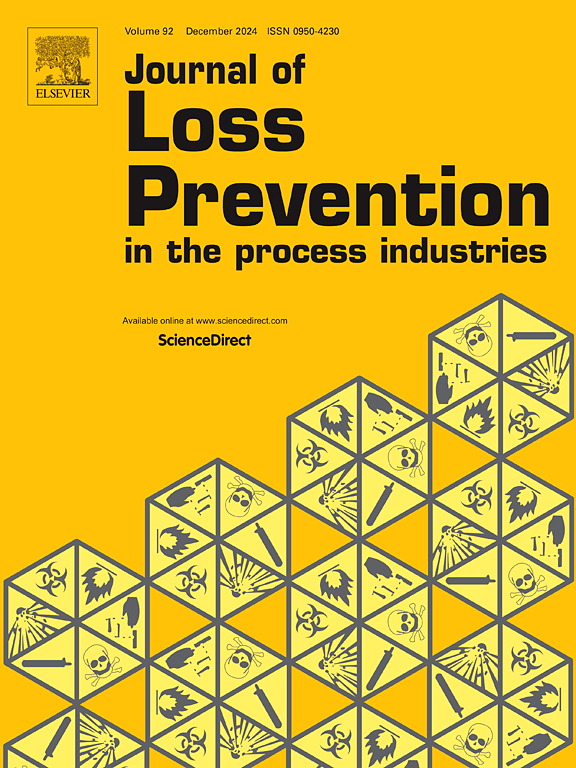分析了固体污染物对滚动轴承润滑脂粘度和理论温度性能的影响
IF 3.6
3区 工程技术
Q2 ENGINEERING, CHEMICAL
Journal of Loss Prevention in The Process Industries
Pub Date : 2025-01-22
DOI:10.1016/j.jlp.2025.105562
引用次数: 0
摘要
本研究系统地研究了普通工业颗粒固体污染引起的润滑脂粘度增加以及塑性损伤发生前对轴承理论工作温度的影响。由于工业中约30%的爆炸是由非电气设备引起的,因此了解由于润滑油污染而导致的高温下滚动轴承点火潜力的发展对于防爆安全非常重要。利用方差分析和回归分析对各试验序列的经验数据进行了分析。研究结果表明,污染浓度与黏度增加之间存在显著的统计学相关性。因此,科学证明,污染的增加会使润滑油脂的粘度增加2.199倍。与使用清洁润滑油的粘度值计算相比,使用污染润滑油分析的轴承的理论温升最大可达2.42 K。然而,需要在轴承试验台上进行进一步的实际研究,以确定理论结果是否可以验证,并进一步研究未开发的流变学和摩擦学因素。本文章由计算机程序翻译,如有差异,请以英文原文为准。
Analysing the impact of solid contaminants on grease viscosity and the theoretical temperature performance of rolling bearings
This study systematically investigates the increase in grease viscosity due to solid contamination with common industrial particles and the effects on the theoretical bearing operating temperature before plastic damage occurs. Since around 30 % of explosions in the industry are caused by non-electrical equipment, understanding the development of the ignition potential of rolling bearings at elevated temperatures due to lubricant contamination is of great importance for safety in explosion protection. Empirical data from various test series are analysed using ANOVA and regression analysis. The work results show a statistically significant correlation between contamination concentration and viscosity increase. It is, therefore, scientifically proven that an increase in contamination increases the viscosity of the lubricating grease by a factor of 2.199. The resulting theoretical temperature increase of the bearings analysed with contaminated lubricants amounts to a maximum of 2.42 K, compared to the calculation with viscosity values of clean lubricants. However, further practical investigations on a bearing test rig are necessary to determine whether the theoretical findings can be validated and further unexplored rheological and tribological factors investigated.
求助全文
通过发布文献求助,成功后即可免费获取论文全文。
去求助
来源期刊
CiteScore
7.20
自引率
14.30%
发文量
226
审稿时长
52 days
期刊介绍:
The broad scope of the journal is process safety. Process safety is defined as the prevention and mitigation of process-related injuries and damage arising from process incidents involving fire, explosion and toxic release. Such undesired events occur in the process industries during the use, storage, manufacture, handling, and transportation of highly hazardous chemicals.

 求助内容:
求助内容: 应助结果提醒方式:
应助结果提醒方式:


